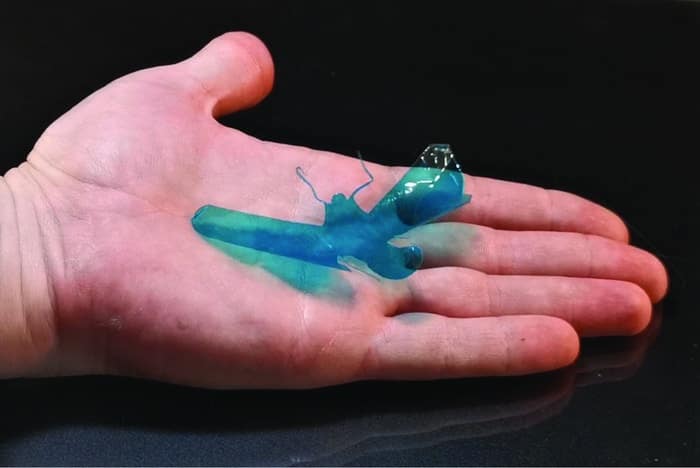Scientists at CUNY Graduate Center and CCNY have developed a novel approach to predict the behavior of water-responsive materials, potentially transforming robotics and clean energy systems.
Scientists from the Advanced Science Research Center (ASRC) at the CUNY Graduate Center and the City College of New York (CCNY) have made a significant breakthrough in understanding water-responsive materials — solid substances that alter their shape by absorbing or releasing water in response to changes in humidity. This discovery holds great promise for industries including robotics, smart textiles, bioelectronics and clean energy systems.
Despite their growing use in innovation, a comprehensive theoretical framework detailing how these materials generate mechanical stress when absorbing and releasing water was missing.
The researchers, led by Xi Chen, an assistant professor in the Nanoscience Initiative at the CUNY ASRC and the Department of Chemical Engineering at CCNY, have developed a pioneering quantitative method.
This method links the structural properties of confined water in these materials to their macroscopic water-responsive behaviors.
“Water-responsive materials that react to humidity changes are highly promising for use as actuators in robotics and for energy harvesting applications, yet we lack the theories to explain or predict the stress they generate,” Chen said in a news release.
The study, published in Nature Communications, sheds light on the role of nanoconfinement of water in determining the behavior of regenerated silk fibroin films.
Darjan Podbevšek, the paper’s first author and a postdoctoral research associate in both Chen’s and Raymond Tu’s labs, emphasized the importance of the study’s parameters in predicting material performance.
“Our research shows that nanoconfinement of water plays a crucial role in determining the behavior of regenerated silk fibroin films. The important parameters highlighted in the study will allow us to better predict material performance and engineering for future use in water-responsive actuators,” Podbevšek said in the news release.

Caption: A moth-shaped cutout made of regenerated silk continuously moves on a hand, driven by surface moisture.
Credit: Darjan Podbevšek
Previous research qualitatively described the stress induced by hydration and dehydration in water-responsive materials (WR materials). However, this new study quantitatively reveals that the molecular structure of water governs stress generation more than the material’s structural properties.
A key finding was observed when all sample materials began to exert force upon reaching a specific threshold of bound and mobile water ratios, a consistency found across all samples.
“This breakthrough not only helps us understand how water-responsive materials work, but also opens doors to exciting new applications in tissue engineering, biocompatible materials, optical coatings and beyond,” added co-corresponding author Tu, a professor of chemical engineering at CCNY.
The research provides critical insights for the development of hygroscopic and water-absorbent materials, with broad implications for biomedical engineering, food preservation and cosmetics.

